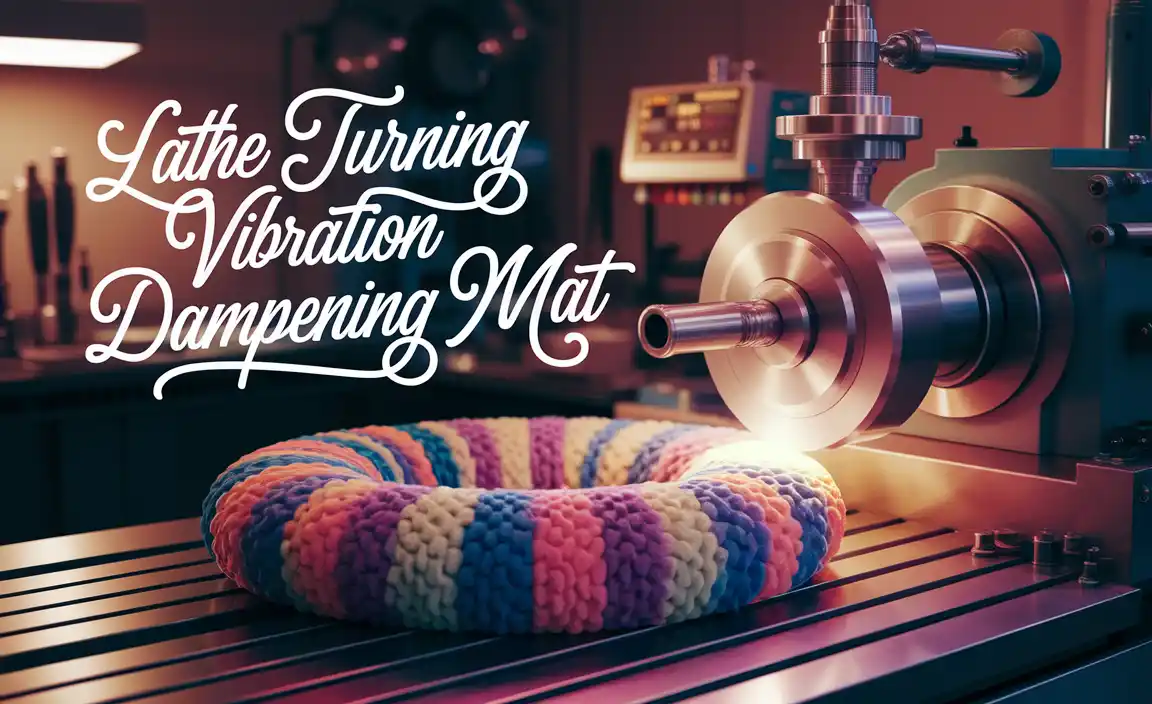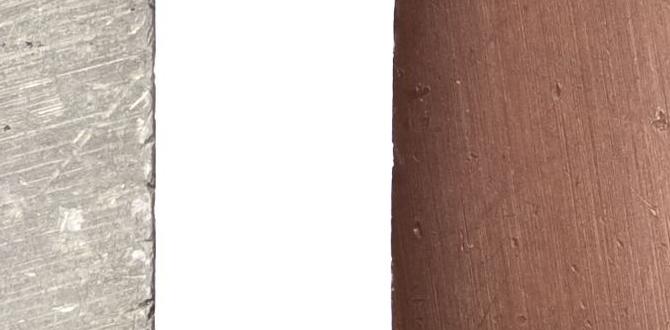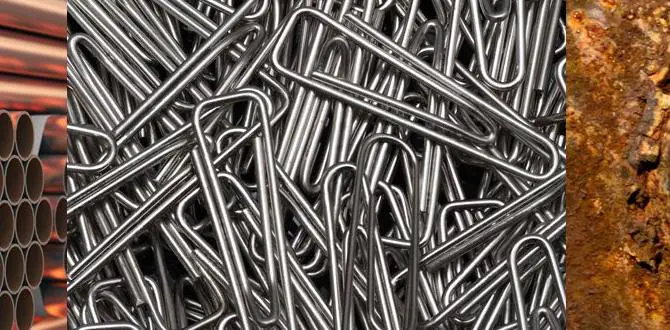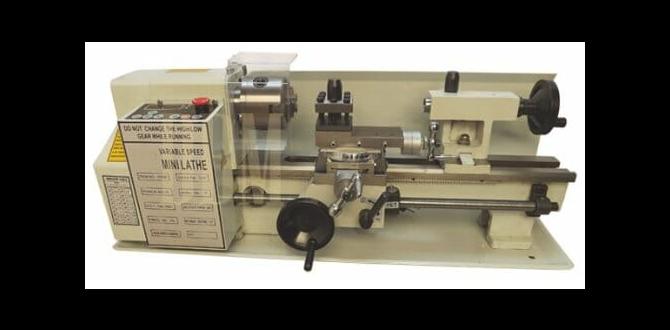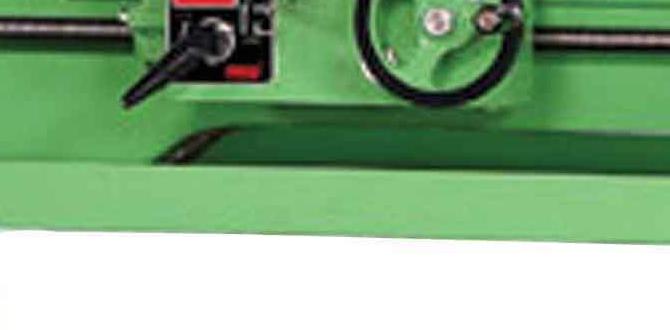Carbide End Mill 1/8 Inch: Essential for Plywood
Quick Summary: For clean, precise plywood cuts on your CNC, a 1/8-inch carbide end mill, especially one with a 1/4-inch shank and extended length, is your go-to tool. It excels at detailed work and reduces vibration, ensuring beautiful results for all your woodworking projects.
Hey there, fellow makers! Ever found yourself staring at a CNC project, excited to tackle some intricate plywood designs, only to be met with frustrating tear-out, chattering, and fuzzy edges? It’s a common hurdle for many who are just starting out, or even those with a bit more experience. The good news is, the solution is often simpler than you think, and it starts with the right tool for the job. Today, we’re diving deep into why a 1/8-inch carbide end mill is an absolute game-changer when it comes to working with plywood, and how picking the right type can elevate your projects from good to genuinely impressive. Get ready to say goodbye to those pesky imperfections and hello to smooth, crisp cuts that will make your projects shine!
Why Plywood Loves a 1/8-Inch Carbide End Mill
Plywood, while versatile and widely available, can be a bit of a challenge to machine cleanly. Its layered construction means that the grain direction changes with every pass, making it prone to splintering and tear-out. This is where the magic of a 1/8-inch carbide end mill truly shines. Its small diameter is perfect for detailed work, allowing you to carve intricate designs and tight corners that larger bits simply can’t manage. Moreover, carbide, as a material, is significantly harder and more durable than traditional high-speed steel (HSS). This means it can withstand the heat generated during cutting, maintain a sharp edge for longer, and provide a cleaner cut, especially in abrasive materials like plywood.
When we talk about a “carbide end mill 1/8 inch,” we’re referring to a cutting tool with a diameter of 1/8 of an inch, designed to cut sideways and plunge into materials. The “carbide” part is key – it’s a composite material that stands up to high temperatures and wear much better than HSS. For plywood, this combination is ideal. You get the precision for fine details and the durability for consistent, clean cuts, project after project.
The Power of the 1/4-Inch Shank
Now, let’s talk about the shank. You’ll often see 1/8-inch end mills advertised with either a 1/8-inch shank or a 1/4-inch shank. While both can work, the 1/4-inch shank offers some significant advantages, particularly for smaller diameter bits like our 1/8-inch friend. A larger shank provides more rigidity and stability. Think of it like trying to hold a thin stick versus a thicker one – the thicker one is much less likely to flex or vibrate.
On a CNC machine, this increased rigidity translates directly to:
- Reduced Chatter: Vibration, or chatter, is the enemy of smooth cuts. A beefier shank helps to dampen these vibrations, leading to cleaner surfaces and fewer audible squeals from your machine.
- Improved Accuracy: With less flex, the tool stays truer to its path, resulting in more precise cuts and better dimensional accuracy for your parts.
- Longer Tool Life: A more stable tool experiences less stress, which can extend its effective lifespan.
For intricate work on plywood where you need to be precise and avoid any roughness, opting for a 1/8-inch carbide end mill with a 1/4-inch shank is a smart move. It’s an upgrade that makes a noticeable difference in the quality of your finished pieces.
The Advantage of Extra Length
Another factor to consider is the length of the end mill. For general-purpose routing and milling, a standard length end mill is often sufficient. However, when dealing with specific materials or achieving certain aesthetic results, an “extra long” or “extended reach” end mill can be invaluable. For plywood, an extra-long 1/8-inch carbide end mill can:
- Reach Deeper Pockets: If your design requires cutting into a thicker piece of plywood or creating recessed areas, a longer tool allows you to achieve the required depth without needing multiple setups or potentially plunging too deep with a shorter tool.
- Clear Chips More Effectively: The flutes (the spiral grooves on the cutting bit) are designed to carry chips away from the cutting area. A longer flute length can sometimes improve chip evacuation, especially in deeper cuts, preventing chip recarving and improving surface finish.
- Enable Undercuts (with care): While not common for beginner projects, an extended length can, in some advanced scenarios, allow for creating undercuts or features that are hard to access, although this requires careful CAM programming.
When searching for the right tool, keywords like “carbide end mill 1/8 inch 1/4 shank extra long for plywood” will help you pinpoint these specialized bits. The combination of a small diameter, robust shank, and a bit of extra reach makes this type of end mill incredibly versatile for a wide range of plywood applications on CNC machines.
Understanding End Mill Basics
Before we get too deep into plywood specifics, let’s quickly touch on what makes an end mill tick. They are rotary cutting tools, meaning they spin at high speeds to remove material. End mills come in various types, each designed for specific tasks and materials. Key features include:
- Material: High-Speed Steel (HSS) is common, but carbide offers superior hardness and heat resistance, making it ideal for harder materials and higher cutting speeds.
- Number of Flutes: This refers to the number of cutting edges on the end mill. Common counts are 2, 3, or 4 flutes. More flutes generally mean a smoother finish but can require more power and slower feed rates, and are better suited for harder materials. Fewer flutes are good for softer materials and faster material removal. For plywood, 2 or 3 flutes are often a good starting point.
- Cut Type: Most end mills are “uncoated,” but some have coatings (like TiN or AlTiN) that enhance hardness, reduce friction, and improve heat resistance. For general plywood use, uncoated carbide is usually sufficient.
- Helix Angle: This is the angle of the spiral flutes. A common angle is 30 degrees. Higher helix angles can provide a smoother finish but might generate more upward force, while lower angles can be more rigid.
For plywood, we’re focusing on a specific type: a solid carbide end mill, typically with 2 or 3 flutes, with a 1/8-inch cutting diameter and often a 1/4-inch shank for extra stability. The “extra long” designation simply means the flutes extend further up the shank than a standard-length tool.
Choosing the Right 1/8-Inch Carbide End Mill for Plywood
When you’re specifically looking for a tool to cut plywood, a few features become more important. As we’ve discussed, a 1/8-inch diameter is excellent for detail, and carbide is the material you want for durability and a clean edge. The 1/4-inch shank provides essential rigidity.
Consider these points when making your selection:
- Number of Flutes: For plywood, 2-flute or 3-flute end mills are generally recommended.
- 2-Flute: These offer good chip clearance, which is beneficial for preventing clogging in softer woods like plywood. They can also often run at slightly faster feed rates.
- 3-Flute: These provide a smoother finish than 2-flute bits because there are more cutting edges engaging the material.
Many hobbyists find a 2-flute end mill to be a great all-around choice for plywood due to its excellent chip evacuation, which is crucial to avoid burning and sticking. However, if achieving the absolute smoothest edge is paramount, a 3-flute with appropriate feed rates can also perform very well.
- Up-cut vs. Down-cut vs. Compression:
- Up-cut: These tools pull chips upward away from the workpiece. They are good for clearing material quickly but can sometimes lift the edges of thin plywood, creating fuzzies on the top surface.
- Down-cut: These tools push chips downward. They are excellent for holding thin material down and creating a very clean top surface finish, but they can pack chips into the cut, leading to overheating and potential burning. They are also less efficient at removing material.
- Compression: These bits have a combination of up-cut and down-cut edges. The top part of the flute cuts down, holding the material edge, while the bottom part cuts up, clearing chips. This is often considered the best of both worlds for sheet goods like plywood, providing a clean top edge and good chip evacuation. A 1/8-inch compression bit is fantastic for plywood!
For the absolute best results on plywood, especially if you’re working with thinner sheets or want to minimize sanding, a 1/8-inch carbide compression end mill is often the gold standard. If a compression bit isn’t available, a dedicated “O-flute” (single flute up-cut) or a 2-flute up-cut bit are commonly used, with careful attention to climb vs. conventional cutting and feed rates to manage tear-out.
- Coating: For most plywood cutting on hobbyist machines, an uncoated solid carbide end mill is perfectly adequate. Coatings are more beneficial for production environments, very hard materials, or when dealing with significant heat buildup.
- Brand and Quality: While it can be tempting to go for the cheapest option, investing in a reputable brand known for quality carbide tooling will pay off in the long run with better performance, longevity, and more consistent results.
Essential Accessories and Setup
Having the right 1/8-inch carbide end mill is crucial, but proper setup and accessories will ensure you get the best performance and longevity out of your tool. Even on a budget, these can make a world of difference.
Collets and Collet Chucks
Your CNC machine’s spindle uses a collet system to hold the end mill. For a 1/4-inch shank end mill, you’ll need a 1/4-inch collet. Ensure it’s clean and in good condition. A worn or dirty collet can lead to runout (the wobble of the tool) and poor cutting performance. For precision, a good quality collet chuck is essential. Many hobby CNC machines come with a basic ER collet system, which is reliable. For even better results, consider a high-precision ER collet system. Ensuring the collet is properly seated in the spindle and tightened according to the manufacturer’s specifications is vital for stability and accuracy.
Workholding
Securing your plywood firmly is paramount. Any movement during cutting will result in errors. For CNC work, popular methods include:
- T-track and Clamps: Use T-tracks embedded in your spoilboard and hold down clamps to physically secure the plywood.
- Vacuum Table: If your CNC has a vacuum system, this is an excellent way to hold sheet goods flat and secure.
- Double-Sided Tape: For smaller or lighter jobs, high-strength double-sided tape can be surprisingly effective, especially when combined with a few screws in waste areas just outside your cut path.
- Double-Sided PCB Alignment Pins: For precise registration, tiny pins can be used in pre-drilled holes to ensure the material stays perfectly in place.
Always ensure your workholding extends beyond the cutting area so the tool doesn’t accidentally collide with clamps.
Dust Collection
When cutting plywood, you’ll generate a lot of fine dust. Effective dust collection is not only important for your health but also for the longevity of your machine and the quality of your cuts. It helps keep the cutting area clear, preventing chip buildup and reducing the risk of burning. A dust shoe attached to your spindle, along with a shop vacuum, is highly recommended.
Optimizing Cutting Parameters for Plywood
This is where we get into the nitty-gritty of actually using your 1/8-inch end mill. Getting the feed rate, spindle speed, and depth of cut right is crucial for a clean finish and to avoid breaking your tool.
These are general recommendations, and you should always consult the manufacturer’s specifications for your specific end mill and CNC machine. A good starting point for a spiral-flute carbide end mill in plywood might look like this:
Feed Rate
The feed rate is how fast the tool moves through the material (e.g., inches per minute or millimeters per minute). For a 1/8-inch end mill in plywood, you generally want a moderately fast feed rate. Too slow, and you risk burning the wood; too fast, and you risk chipping, breaking the tool, or creating excessive vibration. A good starting range could be anywhere from 20-60 inches per minute (IPM), depending on your machine’s rigidity and the specific plywood.
Spindle Speed (RPM)
This is how fast the tool spins. For carbide end mills and plywood, a common range is between 12,000 and 18,000 RPM. Higher RPMs can lead to faster cutting and a smoother finish if your machine can handle it and your feed rate is appropriate. Lower RPMs might be necessary if you experience burning or excessive vibration.
Depth of Cut (DOC)
This is how deep the tool cuts in a single pass. For a 1/8-inch end mill, especially in plywood, it’s usually best to take shallower passes. Trying to cut too deep can overload the tool, generate too much heat, and lead to tear-out. A good rule of thumb is to set the DOC to no more than 50% of the tool diameter, so for a 1/8-inch bit, aim for around 1/16th of an inch per pass. For more detailed work or softer plywood, you might even go shallower.
Calculating Chip Load
A more advanced but highly effective way to determine optimal cutting parameters is by using the concept of chip load. Chip load is the thickness of the material removed by each cutting edge of the tool on each revolution. The formula is:
Chip Load = (Feed Rate) / (Spindle Speed Number of Flutes)
The ideal chip load varies by tool and material. For a 1/8-inch carbide end mill in plywood, a typical target chip load might be between 0.002 and 0.005 inches.
You can rearrange this formula to solve for Feed Rate:
Feed Rate = Spindle Speed Number of Flutes Chip Load
For example, if you want a chip load of 0.003 inches, running at 16,000 RPM with a 2-flute bit:
Feed Rate = 16,000 2 * 0.003 = 96 IPM
This provides a more precise starting point than mere guesswork.
Climb Milling vs. Conventional Milling
This refers to the direction the cutting edge engages the material, relative to the direction of the tool’s rotation.
- Conventional Milling: The cutting edge moves against the direction of rotation. This is often more stable and can reduce the risk of tear-out on plywood, especially on the top surface or when milling external profiles.
- Climb Milling: The cutting edge moves in the same direction as the rotation. This can result in a smoother finish and less force required from the machine, but it’s more prone to tear-out and can cause issues with backlash on less rigid machines.
For plywood, starting with conventional milling for external cuts and being very mindful of tear-out is a safe bet. For internal pockets, climb milling might be preferred for a cleaner finish, but always test on a scrap piece first. Many CAM software packages will automatically select the optimal milling direction, but it’s good to understand the principles.
Using a Cut Chart (Example)
Here’s a sample table to give you a BARE-BONES starting point. Remember to adjust based on your specific plywood type (birch, pine, MDF core, etc.), your machine’s rigidity, and your end mill’s exact specifications. Always perform test cuts!
| Material | End Mill Type | Diameter | Shank Diameter | Flutes | Spindle Speed (RPM) | Feed Rate (IPM) | Depth of Cut (in) |
|---|---|---|---|---|---|---|---|
| Plywood (e.g., Birch) | Carbide, 2-Flute Up-Cut | 1/8″ | 1/4″ | 2 | 16,000 – 18,000 | 30 – 50 | 0.
|

